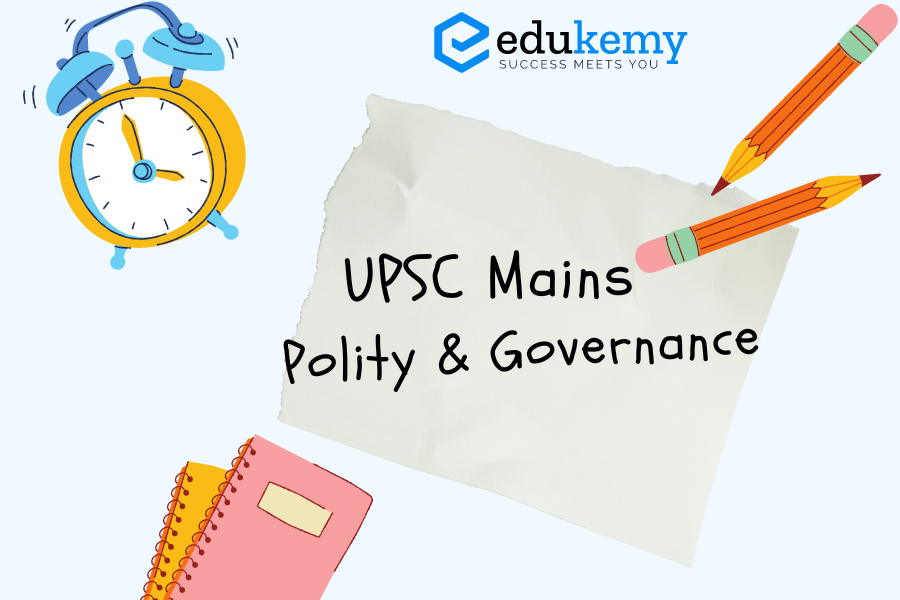
Contents
Introduction:
E-governance, employing information and communication technology (ICT), revolutionizes the delivery of government services, facilitates transactions, and streamlines interactions across the government system, promoting efficiency, transparency, and accountability.
Body:
E-Governance Contributions:
Effectiveness:
- One-Stop Portals: Comprehensive platforms like the UMANG app simplify citizen-government interactions by offering over 1200 services, reducing the need for multiple visits.
- Paperless Transactions: The e-office initiative minimizes manual handling, conserving resources and enhancing efficiency.
- Speedy Processes: Initiatives like the Seva project in Andhra Pradesh reduce delays in providing information and services.
- Online Taxation: Platforms like Income Tax India e-filing simplify tax processes, reduce paperwork, and expedite tax return processing.
- Telemedicine: E-Sanjeevani supports remote consultations, improving healthcare access, especially in remote areas.
Transparency:
- Real-Time Information: Platforms like “MERIT India” offer real-time insights into the electricity market, fostering trust through open data dissemination.
- Public Procurement: Government e-Marketplace (GeM) ensures transparency in public procurement, reducing corruption and ensuring fair market practices.
- RTI Online: Digitization of the Right to Information (RTI) application process enhances transparency and fosters open dialogue between the government and citizens.
- Open Data Initiatives: Public access to government datasets encourages data-driven decision-making and a transparent government system.
Accountability:
- Grievance Redressal Platforms: Digital platforms like CPGRAMS ensure government accountability by offering a structured system for lodging and monitoring complaints.
- Digital Attendance: Systems like the Aadhaar Enabled Biometric Attendance System (AEBAS) promote accountability in government employees’ punctuality.
- Social Audits: E-Governance facilitates social audits, holding authorities accountable for their actions.
- Monitoring and Evaluation: Tools like PRAGATI centralize monitoring, ensuring agencies are accountable and projects are timely implemented.
Challenges:
- Digital Divide: Urban areas have better internet access (44%) than rural areas (17%), creating disparities in e-governance accessibility.
- Cybersecurity Concerns: Frequent cyber-attacks, as seen in the 2021 Air India data breach, raise doubts about data security in e-governance platforms.
- Privacy Concerns: The large-scale collection of personal data, especially through Aadhar, sparks privacy concerns, necessitating robust data protection laws.
- Complex User Interface: Some platforms suffer from user-unfriendly designs, causing usability challenges, particularly for the elderly.
- Limited Interoperability: Limited interoperability slows down processes, requiring users to submit the same data on multiple platforms.
- Inefficient Backend Administration: Outdated backend processes reduce the efficiency of services, creating bottlenecks in service delivery.
- Low Infrastructure Connectivity: Mobile tower connectivity is lacking in Naxal districts, hindering accessibility.
- Language Barrier: The limited availability of e-governance services in vernacular languages restricts usability.
Strategies for Improvement:
- Digital Literacy: Promote digital literacy through grassroots campaigns and introduce it as a compulsory subject in school curricula.
- Cybersecurity Measures: Establish a multi-tier cybersecurity framework and a national cybersecurity hotline for immediate assistance.
- Infrastructure Development: Bridge the digital divide through infrastructure development, including community internet centers in rural areas.
- Multilingual Platforms: Develop multilingual e-governance platforms with voice-assisted services for inclusivity.
- Backend Digitization: Use AI and machine learning to automate tasks and improve the efficiency of service delivery.
- User-Friendly Interfaces: Innovate with user-friendly interfaces, video tutorials, and 24/7 helpline services.
- Interoperable Systems: Facilitate data exchange by creating a universal digital ID for citizens.
- Quick Redressal Mechanisms: Establish quick redressal mechanisms using AI for prompt identification and resolution.
- Training Programs: Design regular training programs for government personnel to enhance their efficiency.
Conclusion:
E-governance has transformed government operations, but addressing challenges and implementing innovative strategies can deepen its impact, fostering a governance model that is inclusive, secure, and truly representative of the people.

In case you still have your doubts, contact us on 9811333901.
For UPSC Prelims Resources, Click here
For Daily Updates and Study Material:
Join our Telegram Channel – Edukemy for IAS
- 1. Learn through Videos – here
- 2. Be Exam Ready by Practicing Daily MCQs – here
- 3. Daily Newsletter – Get all your Current Affairs Covered – here
- 4. Mains Answer Writing Practice – here

